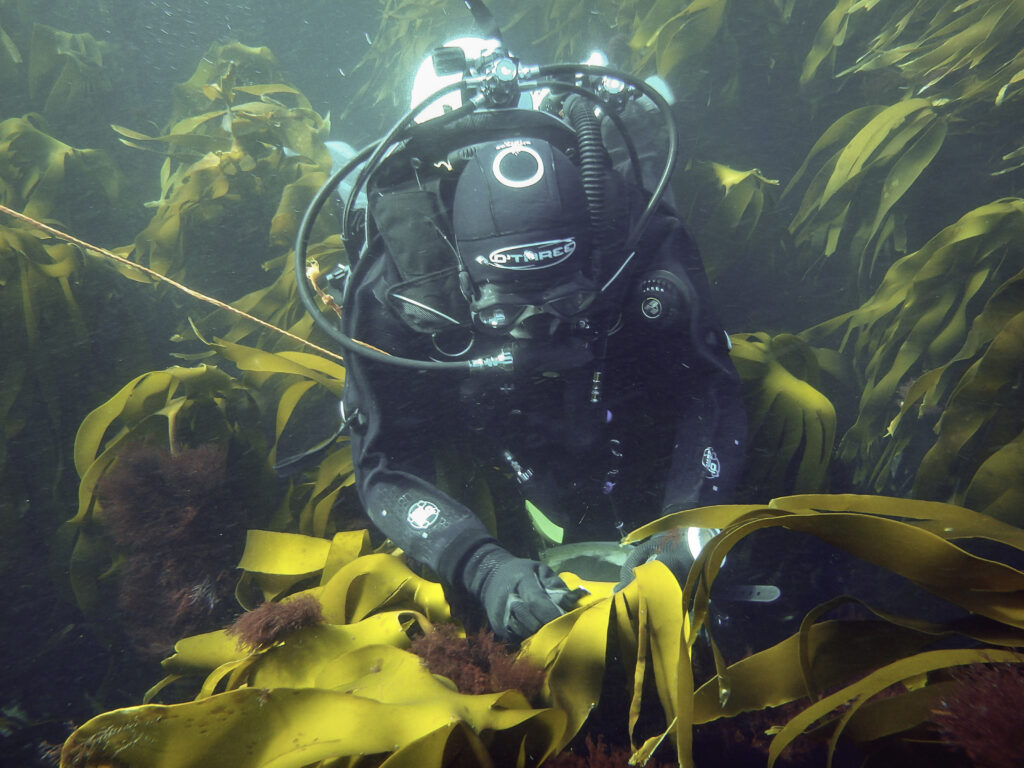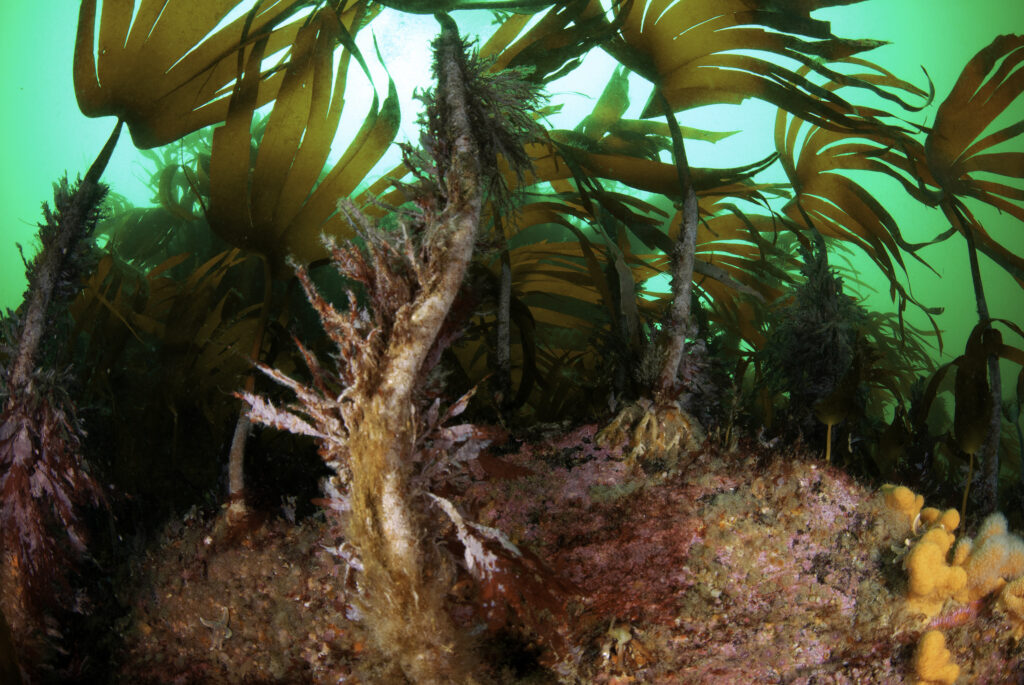
Scientists from Plymouth Marine Laboratory (PML) and the Marine Biological Association (MBA) have used environmental DNA (eDNA) and ocean modelling to follow the dispersal of carbon rich seaweed material, to help improve understanding of natural climate change mitigation solutions provided by seaweed habitats and the patches of seafloor with which they are connected.
Seaweed ’leaf litter’, or detritus, is made from broken-off whole or fragments of seaweed blades. Seaweeds, especially species such as kelp, grow very quickly and in the process absorb large quantities of carbon from the atmosphere through photosynthesis.
Over time, the detritus from the seaweed, as well as the carbon it stores, is released into the ocean. The vast majority of it disperses in oceanic water, some of it eventually reaching the seafloor where it may be trapped and removed from the atmosphere for years to come. Like other ‘blue carbon’ habitats such as salt marshes and seagrass meadows, the seafloor accumulating high levels of seaweed detritus has the potential to store significant amounts of carbon.
However, there is a lack of data and many unanswered questions about where seaweed detritus ends up on the ocean floor and how that impacts the carbon cycle.
The seaweed on the seafloor traps vast amounts of carbon, called sequestration. When calculating global carbon sources and sinks, the role of seaweed isn’t fully understood or considered.

By using state-of-the-art particle tracking models to reproduce seaweed detritus dispersal behaviour, as well as field data, the study showed, for the first time, the distance the detritus travels before reaching the seabed and therefore, where it may end up locked away.
These dispersion pathways were also affected by hydrodynamic conditions, such as wind direction and tides, varying in space and time. Both the properties and timing of released detritus, specific to each seaweed species and the environmental conditions present, are therefore important in determining the connectivity between seaweed habitats and potential carbon storage sites on the seafloor.
The data also showed that seabed sites serving as sinks to seaweed detritus may be located both locally and at far-afield locations, in some cases travelling a substantial distance from their source. This highlights the need for a wider geographical perspective when it comes to the design of conservation mechanism, such as Marine Protected Areas (MPAs), and their ability to support carbon sequestration affected by seaweed inputs and thus, climate change mitigation.
Studies such as this one, supported by further field verification of sedimentary carbon sequestration rates and sources, are still needed to help quantify the role of seaweed in the ocean carbon cycle. This information will improve ‘blue carbon’ modelling to help increase understanding of oceanic uptake of carbon and ultimately, improve models of natural climate change mitigation solutions.
Dr Ana Queirós, Marine and Climate Change Ecologist at PML and lead author on the paper, said:
“The value of seaweed in the global climate cycle, and as climate change mitigation tools, are key points of debate in current conservation biology. Seaweed are some of the most effective carbon soaks in the ocean. However, without knowing the location of seabed sites where seaweed detritus, and therefore carbon, may end up, we cannot design MPAs that provide long-term protection of seaweed carbon. This study is an important first step in that direction. We are now working across a range of sites, from the UK to Australia, to support follow on work that may lead to that step change.”
Dr Dan Smale, Senior Research Fellow at the MBA and co-author of the paper, said:
“Seaweed habitats, such as kelp forests, provide a wide range of ecosystem services and benefits to humans, including supporting coastal fisheries and maintaining high levels of biodiversity. Crucially, they also absorb and release tremendous amounts of carbon into the marine environment. If even just a small fraction of this organic material is captured by and stored within sink habitats this could significantly increase overall rates of carbon sequestration. Studies like ours are needed to quantify this process and better understand carbon pathways in coastal ecosystems. This information is urgently needed to identify, protect and even enhance Blue Carbon services.”
Read the paper here: https://esajournals.onlinelibrary.wiley.com/doi/10.1002/eap.2798